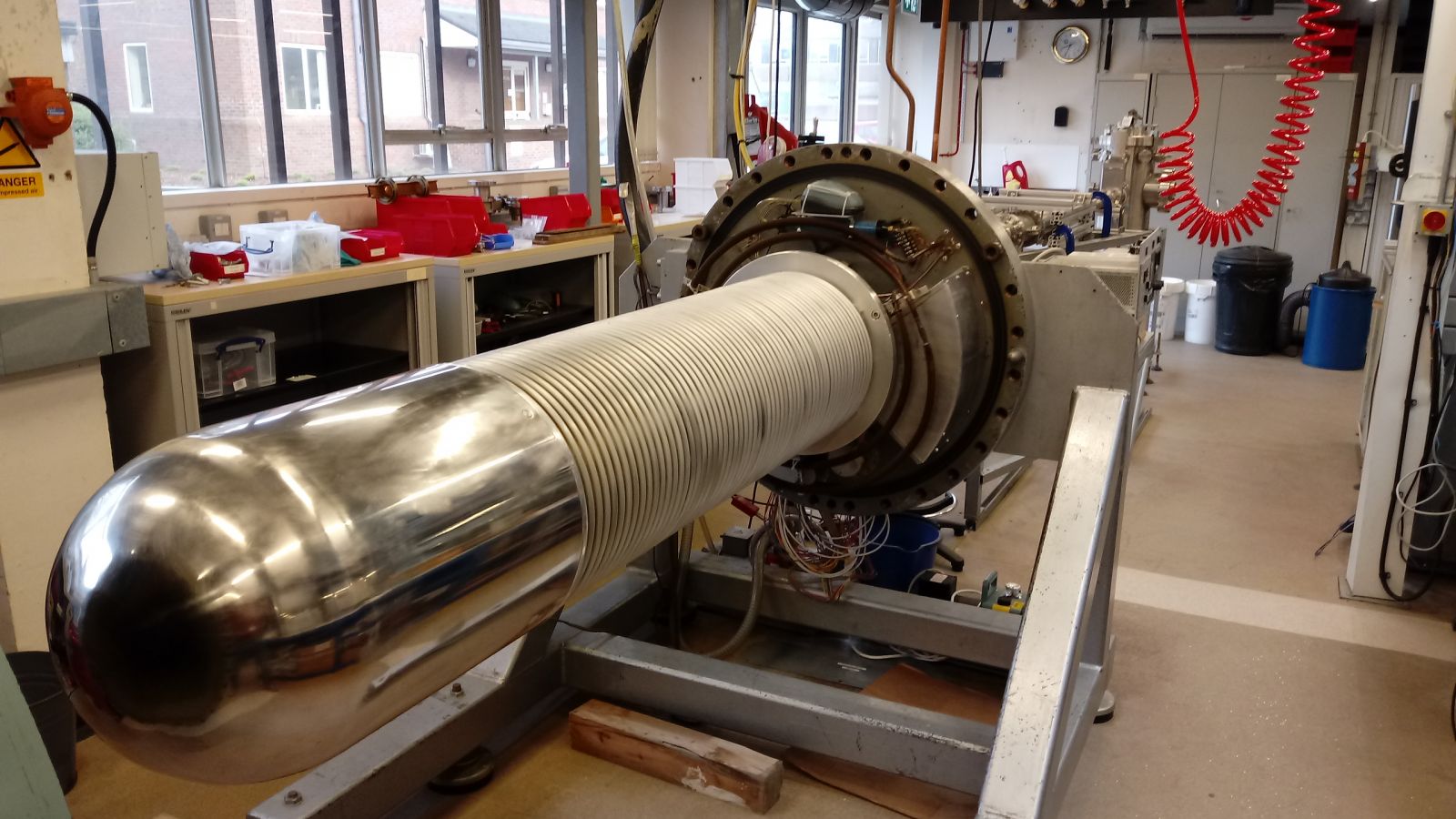Van de Graaff Accelerator
The Van de Graaff accelerator is used to accelerate very small particles to hyper-velocities, in order to recreate the effects of continual micrometeoroid dust impacts as encountered on airless bodies such as the Moon and Enceladus, as well as impacts onto X-ray imaging sensors and other spacecraft components.
Description
The Van de Graaff accelerator charges dust particles to ~+20 kV before injecting them into the acceleration tube, where they are exposed to an electric field of up to 2 MeV, causing the particles to accelerate to velocities as high as 80 km/s. The particles then enter the drift tube, where they may be filtered, to remove particles outside the desired velocity range for a given experiment. Finally, the particles enter a target chamber, which accommodates both the target, as well as any supporting equipment and instrumentation.
The small target chamber can accommodate a 15 cm diameter surface analogue or spacecraft article. For larger targets, such as complete spacecraft instruments, the large target chamber (1 m diameter) is used.
Specification
| Energy | 2 MeV |
|---|---|
| Particle size | 1 – 5 µm |
| Particle material | Typically, spherical iron powder |
| Particle velocity | 2 – 80 km/s |
| Target diameter | 1 – 80 cm |
The Van de Graff Accelerator includes:
- Time of flight detectors
- Particle filtering
- Cryogenic target cooling
Contact
For all enquiries please email: manish.patel@open.ac.uk
